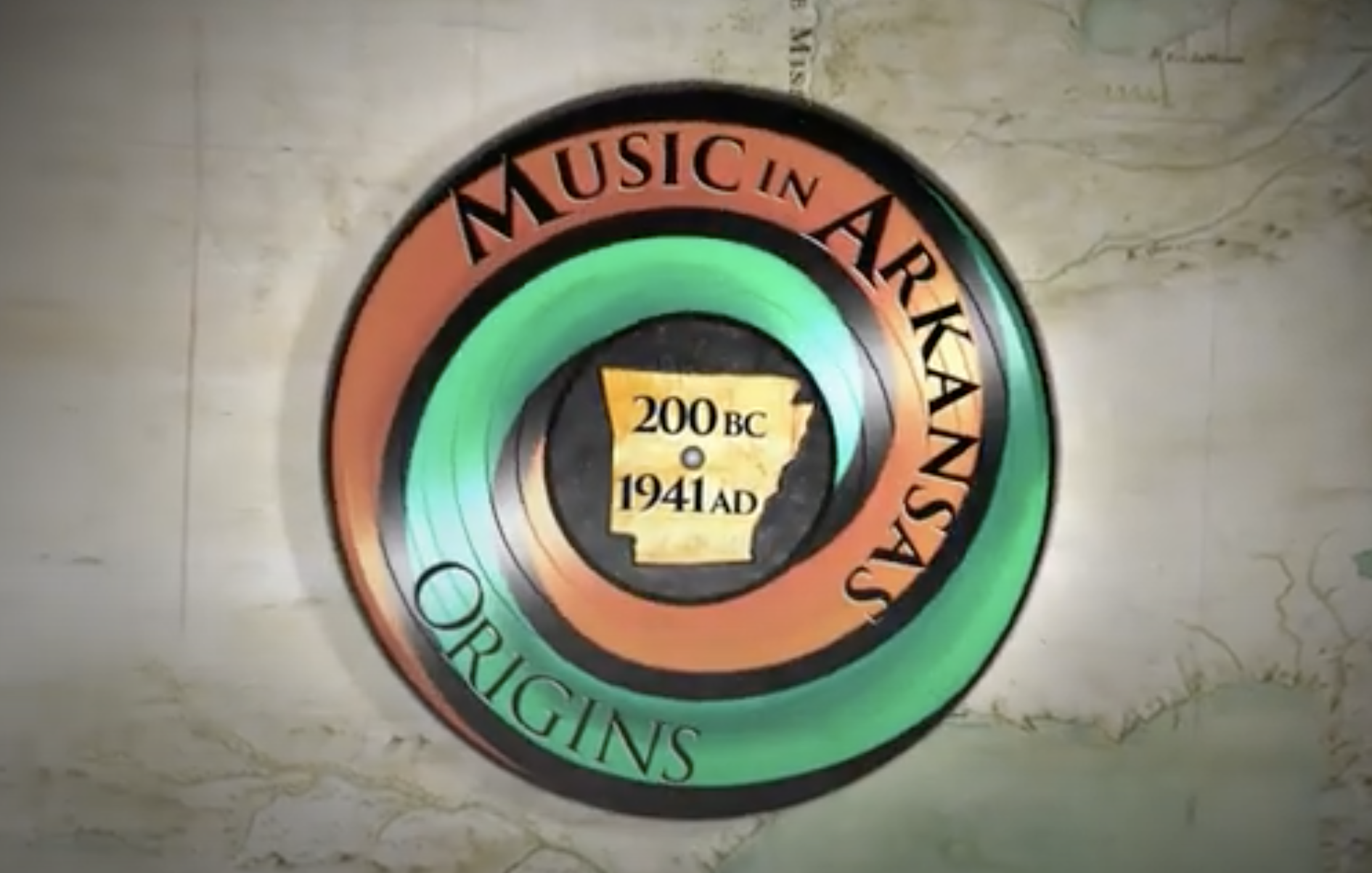Music in Arkansas: Origins 200 BC - 1941 AD
"Music in Arkansas: Origins 200 BC–1941 AD" tracks the development of Arkansas's rich musical heritage, beginning with the discovery of a 200 BC Hopewell panpipe and concluding as King Biscuit Time hits the airwaves in 1941 Helena. "Origins" explores Arkansas's role in the development of fourteen distinct musical genres, as well as how the rich Arkansas soundscape has been influenced by various shifts in culture and Arkansas's unique geographical regions.

Educator Guide
"Music in Arkansas: Origins" is an online professional development course on the ArkansasIDEAS learning management system, worth 2 credit hours in Arkansas history. AETN is proud to provide this educator guide as a resource for middle and secondary teachers who wish to use "Origins" in the classroom. The documentary-style video segments and classroom resources have been developed with the Arkansas State Standards and the College, Career and Civic Life Framework in mind. We hope that you enjoy "Music in Arkansas: Origins" and that you find its accompanying resources beneficial to you, your students, and your learning goals.
Movement Descriptions
Quapaw and French Encounter
Movement One: Prelude
The recorded history of Arkansas's rich musical heritage begins with the songs and rituals of the Quapaw, a people originally known by the French as the Arkansas, whose rituals were recorded during the La Salle Expeditions of 1682. From that first written record referencing music in Arkansas to the founding of Arkansas Post and beyond, Music in Arkansas: Origins explores Arkansas’s influence throughout the development of fourteen distinct musical genres.
Pre-European Exploration through Settlement to 1802
Movement Two: Wind and Percussion
Arkansas has six unique geographical regions, each with a musical heritage dating back to early European exploration and even prehistoric times. "Wind and Percussion" introduces Arkansas's regions and the various instruments discovered within them, exploring the impact of the regions' inhabitants and landscapes on the history of music and musical instruments in Arkansas.
Louisiana Purchase to Early Statehood 1803–1806
Movement Three: Drum Dance
In the decade before Arkansas statehood, a series of treaties forced the Quapaw to move alongside the Caddo. Such forced relocations resulted in great loss, but many shared traditions still survive today. "Drum Dance" explores the extensive complexity of the musical traditions that have persisted in Caddo, Quapaw, and Osage cultures, even through the cultural devastation caused by the Indian Removal Act.
Movement Four: Hymns and Spirituals
Protestant hymnals took hold during an era when music books and sheet music were rare. "Hymns and Spirituals" examines the hymns sung by early Euro-Americans and enslaved African Americans, and how field hollers and spirituals have influenced music in Arkansas today.
Movement Five: Arkansas Traveler
This movement explores a few notable Arkansas songs, including the "Fayetteville Polka," the first sheet music published in Arkansas, and the "Arkansas Traveler," a versatile song that has grown ever more popular through the years and has been modified, recorded, and referenced by hundreds of musicians and other artists.
Civil War through the Gilded Age 1861–1900
Movement Six: Marching Song
During the Civil War, music was used both to keep marching regiments in line and as a morale boost. "Marching Song" explores this music, which soldiers used as a means to share the traditions of their respective cultures as they expressed grief, celebrated victories, and conveyed their dreams for life after the war.
Movement Seven: Composition and Recomposition
Several prolific musical pioneers of note were raised in Arkansas during this era. "Composition and Recomposition" examines their achievements as some of the most noteworthy composers to call Arkansas home.
Early 20th Century 1901–1941
Movement Eight: Folk, Blues and Country
The traditional styles of music that were preserved and reshaped during the 19th century evolved into the folk, blues and country music of the early 20th century. "Folk, Blues and Country" discusses notable Arkansas musicians born in this era who would grow up to be pioneers of the new genres.
Movement Nine: Radio
In 1922, Pine Bluff's WOK would emerge as Arkansas's first radio station. Local broadcasting with this burgeoning mass medium meant that families in rural Arkansas were more connected to the outside world. "Radio" provides information about these first broadcasts and the musicians who would use the platform to perform for wider audiences than ever before.
Movement Ten: Recording and Festivals
The 1930s would see an emergence of festivals, recordings, and increasingly influential radio programs as many musicians began bridging the boundaries of traditional and innovative musical genres. "Recording and Festivals" delves into Arkansas's historic folk festivals and blues broadcasts, revealing some of the most influential musicians of the era.

